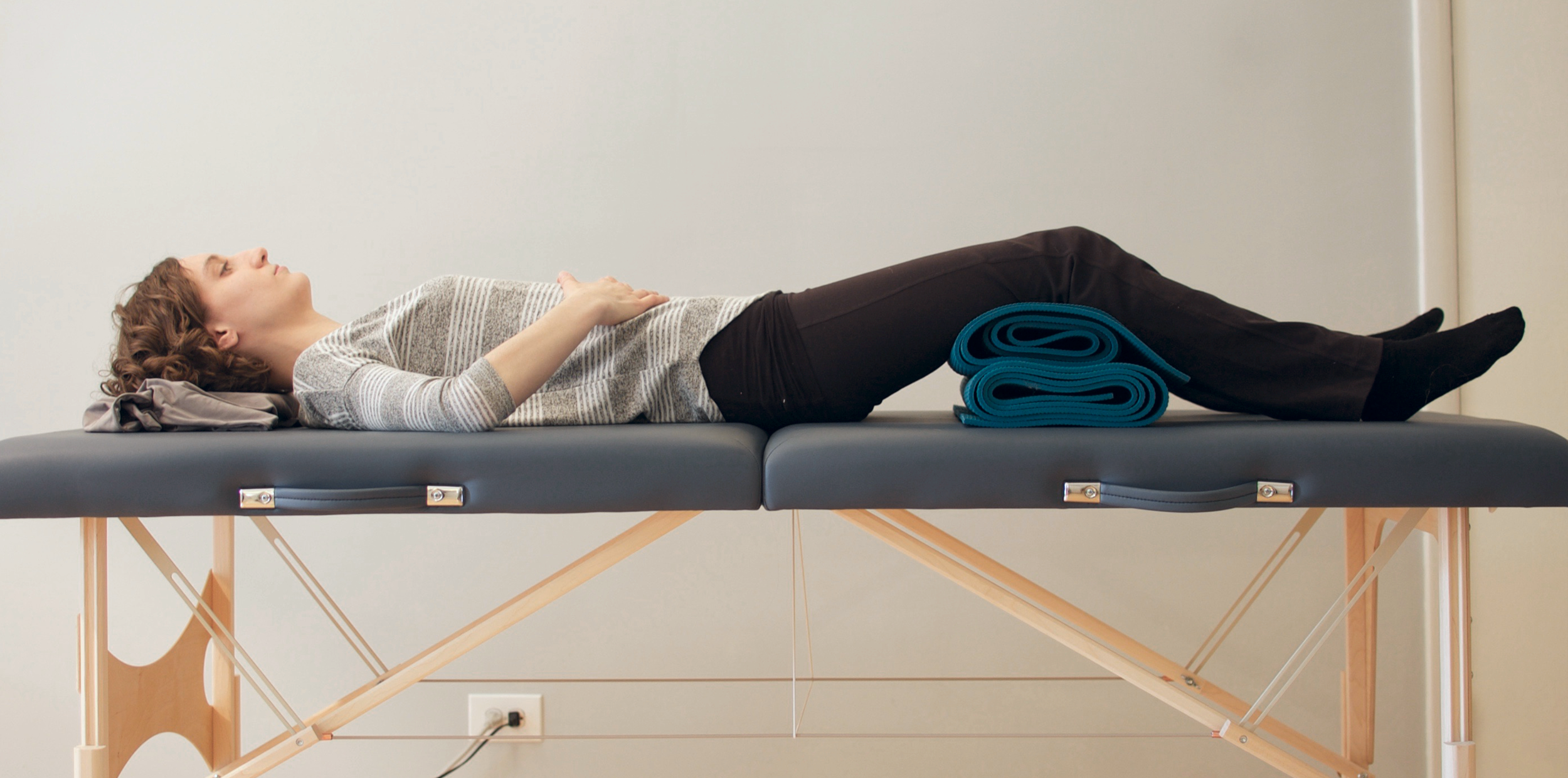Press Pause
Constructive Rest
Here's how to start a self-care practice called constructive rest. Anytime you need a little break, this simple, yet effective practice of lying down will help you find your alignment and quiet the mind and body. This can be useful for: taking a break after some computer work or a stressful commute, or to get ready before a dance/ fitness class or rehearsal.
For a full guided talk through of the constructive rest practice, please play/ download my audio guide.
Getting Started
Take 10-20 minutes to check in with your body. You will want to find a flat, yet comfortable surface - a floor with a carpet, yoga mat, or blanket will do. You will lie down on your back, with your knees bent and pointed to the ceiling. Your feet will be hip width apart. You do not need to flatten your back, as in some fitness routines — you may have a point in your lower back or lumbar curve that does not touch the ground, and this is ok.
Your arms may be placed with your elbows bent and your hands resting on your torso. You may also rest your arms by your sides or spreading out on the ground at collarbone height with the palms up, if that is more comfortable for you.
Support your head with a small stack of paperback books or magazines. We use a flat surface like books instead of a pillow so that you can maintain awareness of the balance of the head. If the flat surface of the book is uncomfortable, place a towel on top for a little more cushioning. You may need to experiment to find the height of books that is right for you. If the books are not high enough, you may feel your head tipping backward. If the books are too high, the front of your throat may feel crunched. The books are meant to support under the back of the skull, not the neck, so make sure the books aren't poking into the back of the neck.
Position for constructive rest.
If you find it difficult to hold your legs up, place a mat or blankets beneath your knees.
While you're resting
In this practice, we are learning to deepen our awareness, so it is useful to have your eyes open. Begin by noticing your body as a whole, and where it is making contact with the ground. Don't immediately start to change anything, just begin observing. Know that just by lying here, gravity is helping to undo your tensions and allowing the spinal fluid to replenish between your discs, decompressing the spine.
Notice your head as it rests on the books and see if you can allow a little freedom at the top of the spine, where it joins your skull, right at the level of your ears.
Allow your whole back to be supported by the ground and release any extra work it's doing.
Sense your whole spine lengthening as you lie on the floor, from the top to the tailbone.
Sense your shoulders widening outward as you allow your arms to rest.
Allow your legs to only do as much work as they need to keep them up with the knees pointed to the ceiling, releasing any excess tension in the legs you're using to hold them up.
Pay attention to the breath, allowing the breath to come in through the nose, and gently out through the mouth.
Notice the jaw, and allow any extra work it's doing to drop away.
Allow your whole body to lengthen and widen as you lie on the floor.
After 10-20 minutes, get up slowly, and continue your day with a little more ease.

